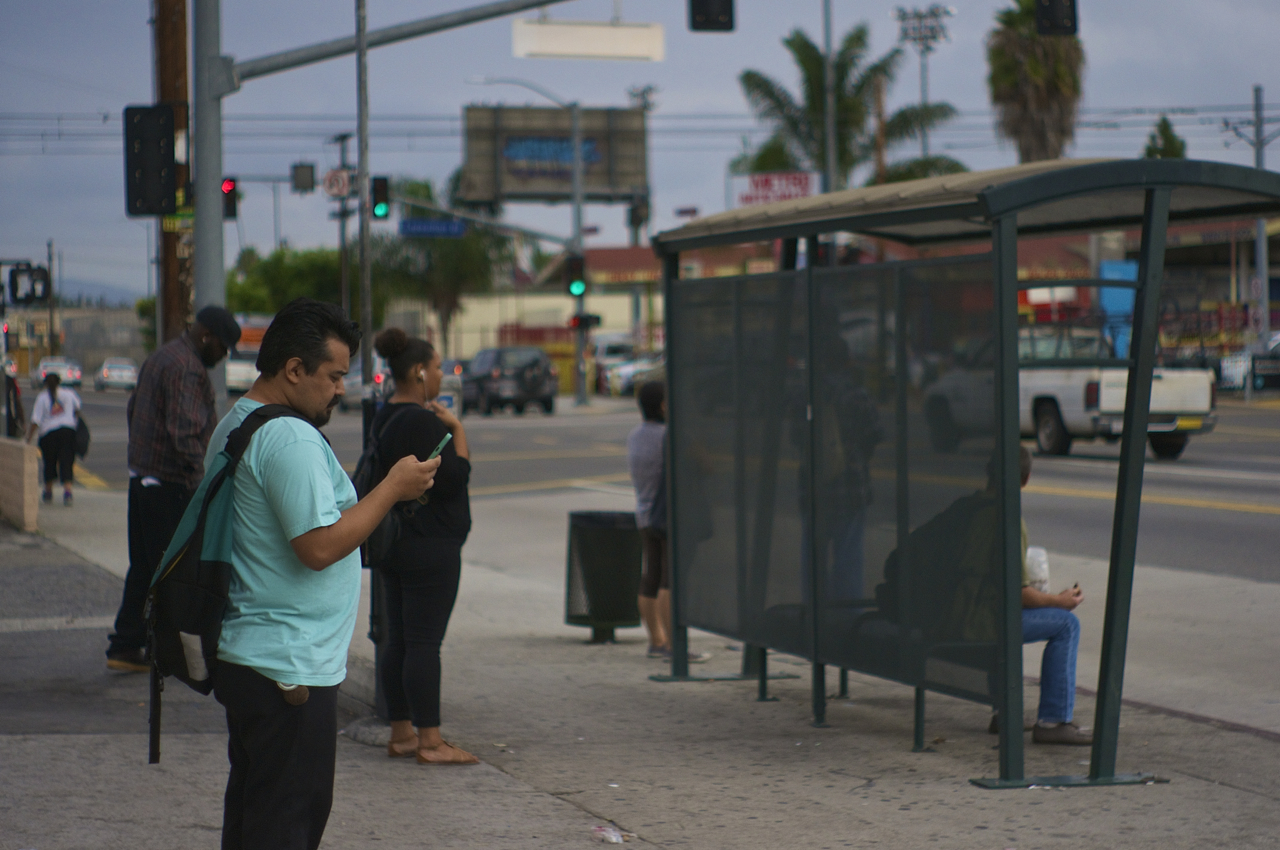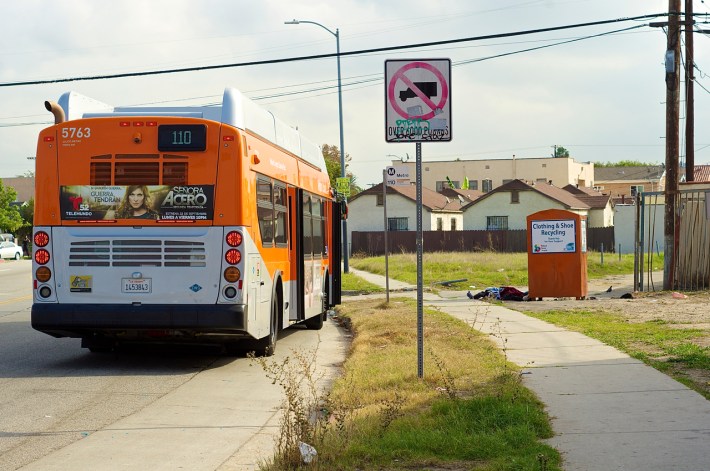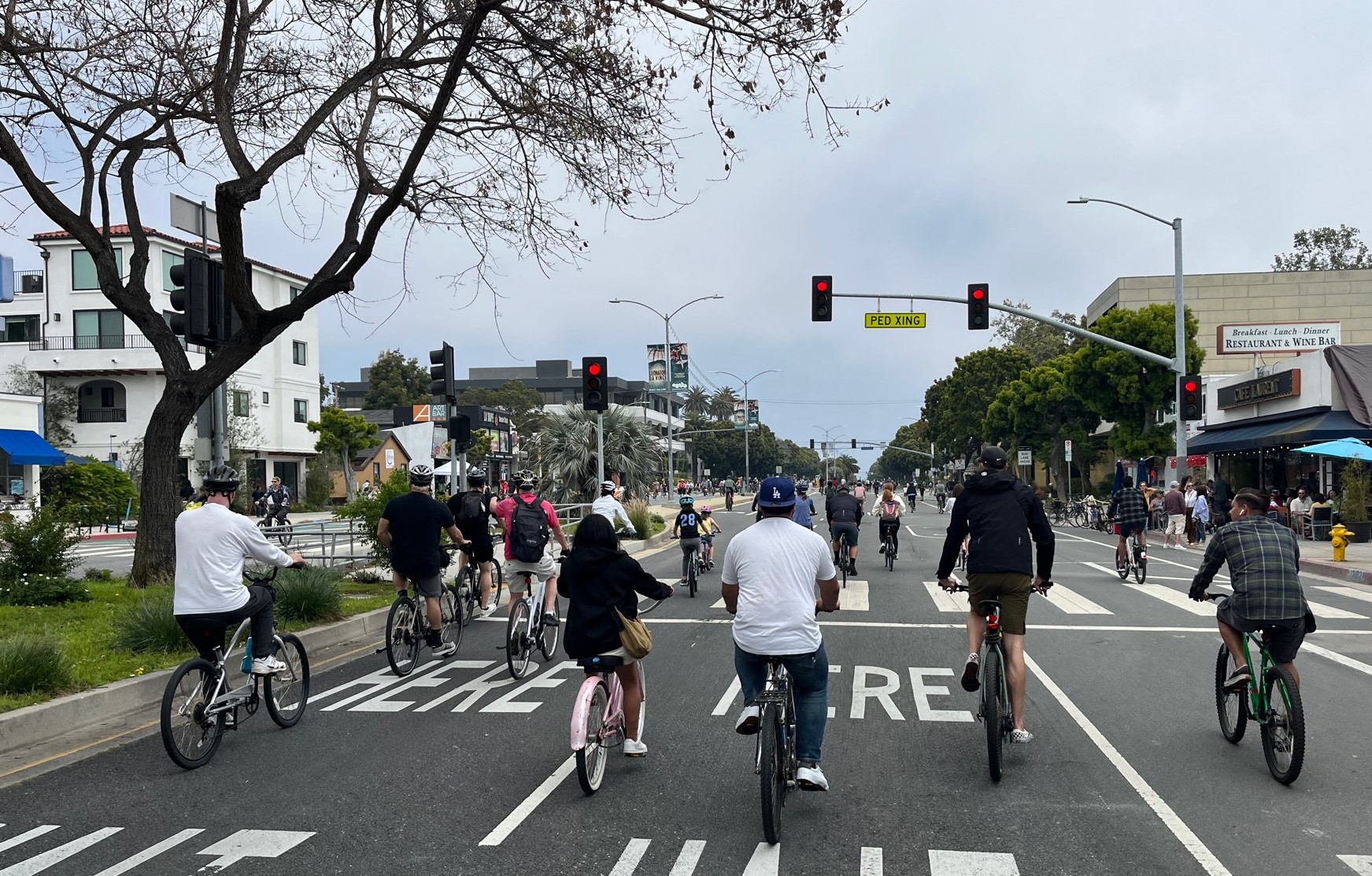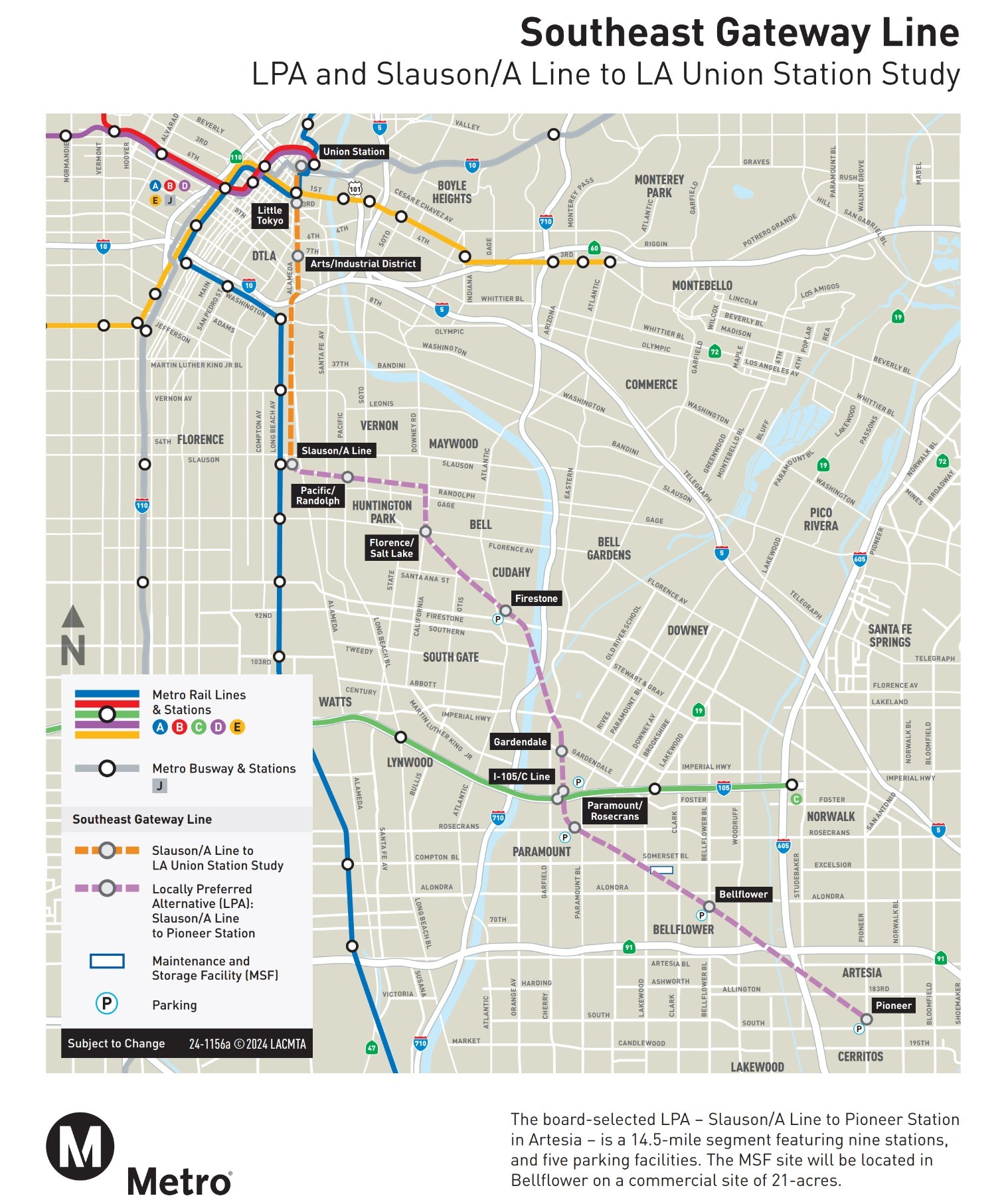Area Mobility Advocate Exhausted by Bus, Makes Decision to Buy Car
3:52 PM PDT on October 23, 2015

Erick Huerta checks his phone as he waits for the bus on Western Ave. at Exposition Blvd. At this point he has already taken one bus and one train and has been in transit for an hour and fifteen minutes. Sahra Sulaiman/Streetsblog L.A.
What was I writing about, a woman wanted to know.
She had heard me explain to a gentleman passenger on the bus that having a camera with me did not mean I was a stripper. I was a journalist.
That news seemed to have disappointed him. He had fond memories of taking fifty bucks' worth of one dollar bills to the Gold Digger as a young man. So much so that even when I explained I was interested in seeing more investment in the bus system so people could get to their destinations in a reasonable amount of time, he kept taking the subject back to the ladies of "extraordinary talents" that he had once known.
I turned to the woman that had asked the question, gestured toward my friend, social justice advocate, and noted Boyle Heights resident Erick Huerta, and said, "His commute."
"Commute" did not seem like the right word to describe a trek that involved two buses, a train, just under a mile's worth of walking, and anywhere from an hour and a half to two hours of transit time for one trip. Coming home was more of the same, adding as many as four hours to an 8-hour (but sometimes longer, as Huerta is in the non-profit world and there are often community meetings) work day. And that's when service wasn't held up because of a bus or train breakdown, something which happened far too often for his taste.
"It shouldn't take me two hours to go 12 miles," he said as we boarded the first bus at 8:08 that morning.
He's right.
By bike, the commute takes under an hour. And when he's gotten a lift in a co-worker's car (or on a rare occasion, a very costly Uber/Lyft ride), it takes just half an hour.
It was so crazy getting a ride after work one day and realizing he had the time to meet a friend for dinner and just hang out, he said.
It's the reason he has decided to buy a car.
Not to drive it every day, he reassured me. But to be able to have the option of doing so when he wanted to have time to have a life outside of work and commuting.
You see, Huerta has never owned a car.
Brought to the U.S. as a young child, his undocumented status meant that, until recently, he couldn't get a driver's license. And because of his status, the struggle to find stable work and even stable living arrangements, at times, meant that a car would have been out of reach anyways.
Growing up, his family owned one car and it was mainly for his father to use for work and special errands, like runs to the grocery store. For everything else his family did and everywhere else Huerta needed to go, there was the bus.
And it kind of sucked.

Back in the day, you would hold your breath every time the bus stopped to pick up someone in a wheelchair, he said. Often the ramps would fail, shutting the whole bus down. Passengers would be stuck waiting for another bus to come and replace the first. And hopefully that one had a working ramp.
And then there were the traveling companions that made the environment less welcoming. The lack of lighting, too few bus shelters, benches, or trash cans, and the poor maintenance of the stops that did have street furniture also made (and continue to make) the wait for transit unpleasant. And the infrequent service at off-peak hours, the challenge of getting bikes on trains or buses at peak hours, having to be vigilant and avoid snatch-and-grabs, and the harassment of folks of color by the Sheriffs all added insult to injury.
Oh, and dating, he shook his head.
"That's another f*cking pedo!" (hassle)
Not having much control over your schedule can make it hard to meet up with people. And, he had found, there were some women that simply were not impressed by the idea of going on dates by bus or bike.
These are the things many advocates for car-free and transit-oriented lifestyles tend not to understand, he explained.
They generally have the privilege of being able to set themselves up in an area that makes transit use attractive. And their better-paying, more centrally-situated jobs often reward them for doing so. When transit is the faster, more convenient choice and you are rewarded for taking it, then of course it is the option that makes sense. But when you're lower-income and have limited options for housing near your job or are forced to move farther and farther away from transit centers as rents rise and communities near those hubs gentrify, then transit becomes the burden folks are eager to shed as soon as they can.
Our transit system, in other words, fails to adequately meet the needs of those who rely on it the most while catering its messaging to attract those that have the greatest number of options at their disposal.
Despite all this, Huerta said, he still felt a bit guilty about making the decision to get a car. Like he was turning in a badge that he had earned for finding a way to make the bus work for him.
"Why not just ride your bike every day?"
Huerta is a volunteer with Multicultural Communities for Mobility, an organization that advocates for safe, alternative transportation access in underserved communities of color in L.A. He has been active in advocating for bike lanes in Boyle Heights, doing outreach around mobility issues in the community, teaching others bike safety (he was recently LCI certified), and speaking about how to incorporate equity in transportation advocacy at various forums.
He did ride at least once a week, he said. But his route through Boyle Heights and South L.A. were along roads that lacked infrastructure and were in poor shape. It was uncomfortable, stressful, and could take a toll on your body, he said.
"Not to mention the road rage," he texted me later in the day. "Someone along Expo and Vermont was run over today...They're saying it was [intentional]."
It was.
According to KCAL9, witnesses watched an ugly physical struggle between a cyclist and a driver of an SUV end abruptly when the driver, who threatened to run the cyclist over, actually did exactly that, killing him and fleeing the scene.
While those sorts of rage-fueled incidents are rare, hit-and-runs are unfortunately not. And lower-income cyclists of color in South L.A. tend to rank among the highest number of victims in the city.
Leaving Huerta at his workplace and walking back up Western, a well-known zone of prostitution (and also the former killing fields of the Grim Sleeper), I was followed by a few cars and overtly solicited for sex by one driver. For too many women and young girls in the area, this constitutes yet another deterrent to transit access - waiting for the bus can mean having to fend off johns, even at ten in the morning.
I kept walking.
Sahra is Communities Editor for Streetsblog L.A., covering the intersection of mobility with race, class, history, representation, policing, housing, health, culture, community, and access to the public space in Boyle Heights and South Central Los Angeles.
Stay in touch
Sign up for our free newsletter
More from Streetsblog Los Angeles
This Week In Livable Streets
Active Streets Mission-to-Mission, LAPD reports on its use of force in 2023, Pasadena Transit plans, Metro subway construction, and more
Eyes on the Street: Santa Monica Connection from E Line Bike Path to Downtown Is Almost Complete
“Always be closing gaps in your bikeway network.”
CicLAvia Opens Venice Boulevard – Open Thread
CicLAvia opened six miles of Venice Boulevard - from Culver City Station to Venice Beach




